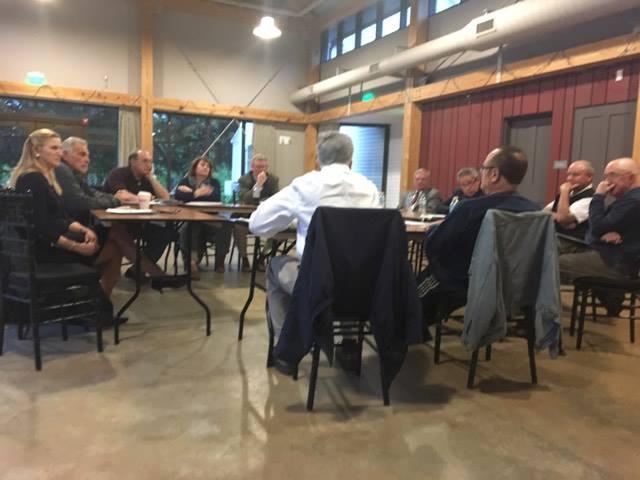Summit of the Local Powers (Selectmen meeting 5/25)

A large portion of the meeting was dedicated to how each board goes about governing their community on certain issues. One of which was shared resources. It was largely unanimous among the towns that centralized control works best for overseeing the servicing of community resources, but it was also found that while some aspects are easier to have complete control over, such as animal control, things like education facility maintenance are divisive issues.
Holliston for instance, wants to control the majority of the upkeep of school grounds. They have received backlash from the local schools though, which want to keep federal funds that they might not receive if they no longer had to be responsible for the sports fields, the parking lots, etcetera. Similarly, Medway is looking to create a separate town facilities branch that would include the schools as well. Jay Marsden, one of the Holliston selectmen, said that centralization would allow schools to “keep the place looking good, but focus more on educating the kids.”
Some of the “best practices” noted during the meeting included Holliston’s use of stipends in the fire department and Ashland’s noise nuisance by-law.
The selectmen also discussed local projects with regional impacts, such as the effects of the growing Legacy Farms development in Hopkinton on traffic in neighboring towns and the prevalence of out-of-town commuters in residential areas. All towns reported instances of increased congestion and traffic violations caused by construction of some sort. It was found that a mixture of temporary measures, such as restrictions on street usage during certain times of the day, and an overall increase in joint communication between towns on proposed projects and their possible consequences could be a solution. Ashland has recently created a sub-committee specifically for traffic related issues.
Also mentioned in the meeting were the key performance indicators for the towns. The KPI are statistics that measure things like budget expenses and town election turnout. A majority of the statistics talked about were financial related. The peer average of revenue was around $48 million and the average debt was 6.7%. The biggest expense for each town was education; making up an average of 55% of the total budget.